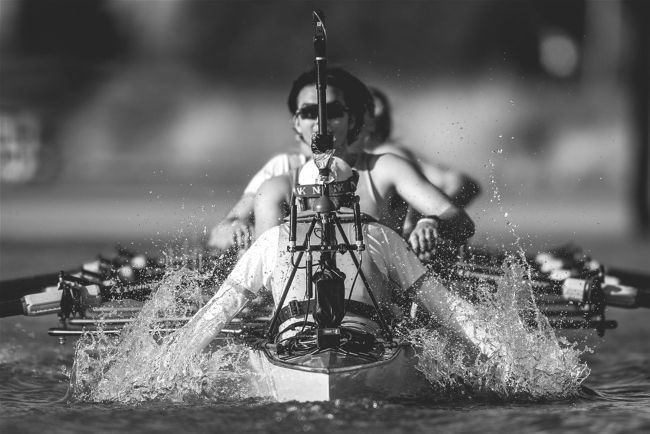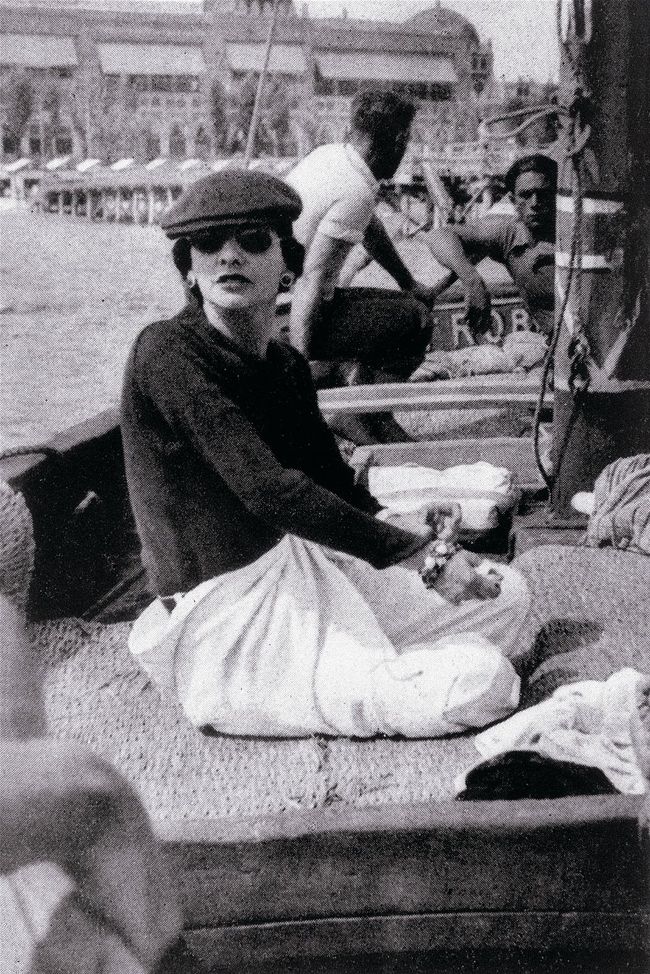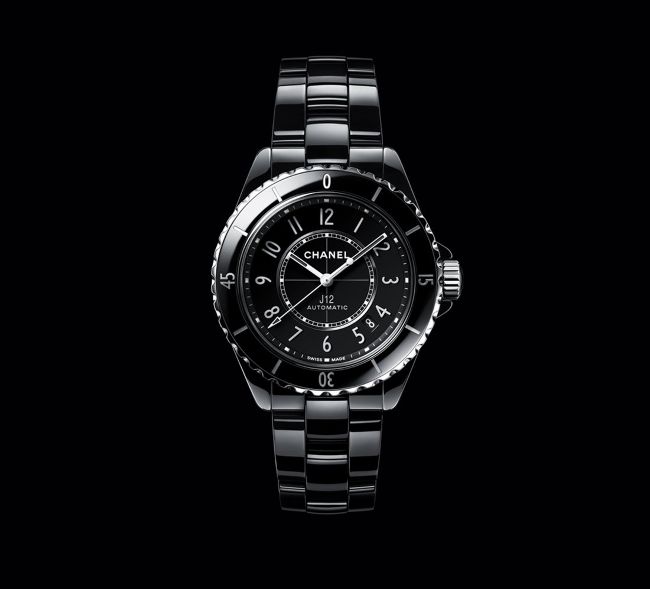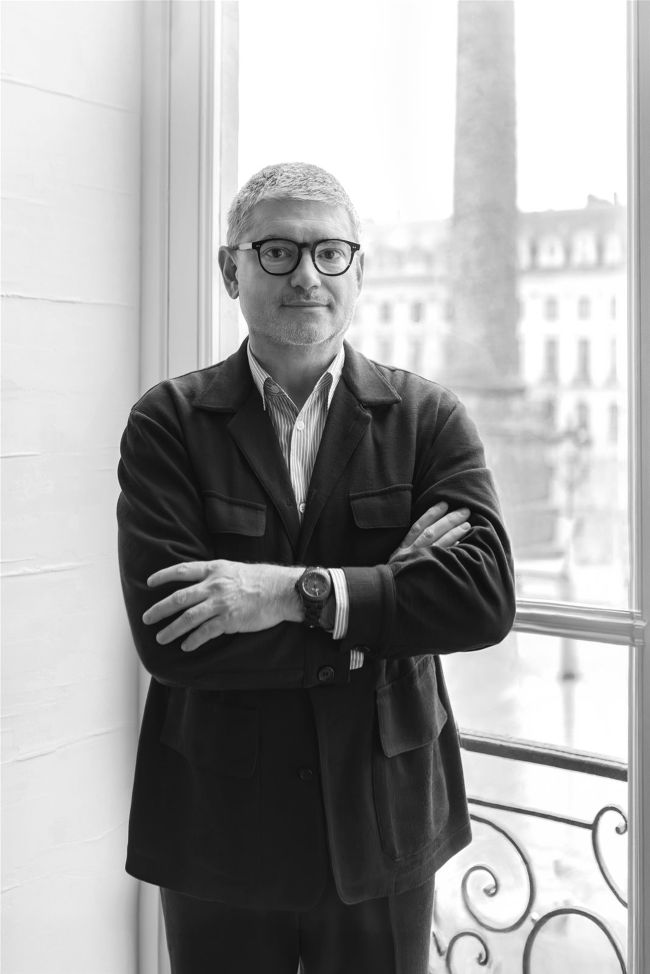FEATURE
CHANEL and The Boat Race
Gabrielle Chanel’s personal relationship with Britain began long before
she opened her business.
Words: Nick Foulkes

© Benedict Tufnell
Had you perused the front page of the Financial Times on October 22nd last year you would have been informed about the rising price of gold, the cost to business of the Labour government’s workplace reforms, and encountered an article headlined ‘French fashion house Chanel dips oar into sport with Boat Race sponsorship’.
‘The annual boat race between Oxford and Cambridge universities is to be renamed after a CHANEL watch in the French fashion house’s first foray into sport sponsorship,’ revealed the story. ‘From next year, the contest will be rebranded ‘The CHANEL J12 Boat Race’, taking on the name of a high-end timepiece produced by the privately owned luxury goods company.’

Gabrielle Chanel on Roussy Sert’s yacht in front of the Lido, Venice, 1936. © V.H. Grandpierre/Vogue Paris
This unexpected yet intriguing alliance sent ripples through both the fashion and sporting communities and was deemed news enough by the FT to push concerns about prison overcrowding, crisis in the NHS, and a spat between the Bank of England and the Office for National Statistics onto page two.
There are many boat races, but there is only one Boat Race. One of Britain’s most cherished sporting traditions, it is free-to-view from the banks of the Thames and, whatever the capricious early spring weather, an estimated quarter of a million spectators line the river from Putney to Mortlake cheering on the powerfully built oarsmen and oarswomen (and slightly built coxswains) from the two great universities as they battle it out over 6.8km of café au lait coloured tidal waters. It has been a part and pillar of British sporting and social life since 1829: not quite as old as the Derby (1780), but older than Henley Royal Regatta (1839).
Likewise, there is haute couture and there is CHANEL, arguably the most famous fashion house in the world, renowned for: its revolutionary use of jersey fabric, the invention of the ‘little black dress’, the creation of its eponymous suit, and of course the emblematic CHANEL N°5, most probably the world’s best-known fragrance.

J12 Caliber 12.1, 38MM, in black highly resistant ceramic and steel, black-lacquered dial by CHANEL Watches
Prima facie haute couture and eights racing might seem diametrically opposed: disparate worlds, Venn diagrams that do not intersect. But the surprise of the announcement should not obscure the fortuitous and authentic nature of the partnership. Close students of CHANEL’s history will immediately recognise it as an echo of founder Gabrielle Chanel’s fascination with British Society and her keen eye for adapting elements of British style into her revolutionary designs.
The Roaring Twenties in Britain saw the old world of patrician privilege tempered by the awakening of modernity and growing sense of equality. During the twenties British women achieved rights and freedom that would have been inconceivable in their mothers’ time. Women achieved equal voting rights and in 1927 the first Women’s Boat Race was held. The same year that Chanel opened a salon and atelier in Mayfair, where English seamstresses, working under the direction of French ‘premieres’ created garments modelled by English ‘mannequins’ that were an haute couture expression of the entente cordiale. ‘French chic adapted to English tastes and tradition’ was the way Vogue described it at that time.
But Gabrielle Chanel’s personal relationship with Britain began long before she opened her business. An Anglophile, in so many ways, not least in the taking of English lovers, her decade-long affair with ‘Boy’ Capel, a polo player, playboy and shipping heir, not only marked her first significant connection to the UK but also profoundly influenced her design aesthetic. His sporting wardrobe inspired Chanel’s early experiments with jersey fabric, a radical departure that set her apart from her contemporaries.
“There are many boat races, but there is only one Boat Race. One of Britain’s most cherished sporting traditions.”
Her affinity for British culture deepened through her affair with Hugh Richard Arthur Grosvenor, second Duke of Westminster, which began in 1923. The Duke was a reactionary anachronist who might have felt more at home in the 19th century. His chief interests were shooting, fishing, hunting and racing, pastimes that permitted him to indulge the exaggerated affection shown towards dogs and horses, typical of his class.
But his reputation as a sportsman extended beyond his passion for country pursuits. In 1908 he had competed in the London Olympics racing a motorboat. Moreover, his family had a strong connection with rowing. The Grosvenor Rowing Club, bearing the family’s name, was founded in Chester in 1869 to serve what were quaintly known as ‘the clerks and assistants’ of the city. Its motto ‘Virtus non stemma’ (Virtue, not pedigree) is that of the Grosvenor family, and the Duke’s coat of arms was adopted as the club’s ‘logo’. Later in the century boats would bear the names of members of the Duke’s family, and on the centenary of the club the then Duke of Westminster presented the club with a silver replica of the ‘Admiral of the Dee’ regalia, which is still worn by the club’s chairman on ceremonial occasions.
Her relationship with the Duke of Westminster afforded Chanel an entrée into the highest echelons of British society, through which she moved easily, striking up enduring friendships with many, including most notably Winston Churchill. And while it is not known whether she tried sculling herself, Chanel seemed to enjoy essentially British sporting pursuits of the Duke’s social circle: usually involving horses.
It was during this period that Chanel’s appreciation for British tailoring and fabrics truly blossomed. She became a customer of the storied tailor Huntsman, where she had skirts and riding breeches made, experimenting with cavalry twill and whipcord in what would become a familiar palette of black, fawn and grey riding skirts. She borrowed her lover’s shooting and fishing tweeds which she wore in unconventional ways, and then began ‘making his tweeds her own’, and wearing them with a panache not usually associated with traditional sporting garb. Having adopted the Duke’s wardrobe, she then started using tweed from Linton Tweeds in Carlisle, to make suits and jackets. Chanel’s relationship with Linton Tweeds remains intact almost a hundred years on.
Indeed, it could be argued that her longest-lived and most enduring British love affair was with tweed and British fabrics in general. Her commitment to British apparel went much deeper than a merely aesthetic influence, as was demonstrated in 1932 with the establishment of British Chanel Ltd, which worked with over 40 British textile manufacturers, making fabrics to Chanel’s designs, and even went so far as going into business with Huddersfield woollen mills: extending the existing factory to accommodate production of her intricate jersey fabrics. There was a fashion show in London featuring 130 looks modelled by leading Society Ladies.
Viewed from this side of the English Channel, CHANEL’s current sponsorship of The Boat Race can be seen as a continuation of Gabrielle Chanel’s fascination with Britain’s unique, sometimes eccentric sporting culture. And conceptually The Boat Race is not unlike a fashion show in that months of hard work are distilled into a few tense minutes, and it is those minutes, seconds and fractions of seconds that CHANEL Watchmaking is interested in.
It is the first time that CHANEL has done anything like this and Frédéric Grangié, CHANEL’s President of Watches and Fine Jewellery, was not even on the lookout for a sponsorship opportunity or timing partnership for J12. It came about almost accidentally. “There was no agency, no consultancy involved,” says Grangié, adding with a laugh “and it didn’t come from a PowerPoint presentation”. A friend had told him that The Boat Race was looking for a new main sponsor and as he was curious, he agreed to take a meeting with the organisers.
“I went with a colleague, and we had a two-hour conversation with The Boat Race Company, which organises The Boat Race for the universities. When we left the room, I knew this was a project that was going to happen. And I believe they had the same feeling as well.” Only later did he realise the significance of the date. “We met on the 10th of June, the date of the first Men’s Boat Race. It felt really serendipitous, really special to be having a conversation about The Boat Race on that day.”
Nor was that the only synchronicity to emerge from this PowerPoint-free meeting. “It is the first time-keeping agreement that CHANEL has ever done. But when we looked at the years to come, it became even more obvious, because in 2027, it will be the centenary of the Women’s Boat Race, and then in 2029 we will be celebrating 200 years of one of the oldest competitions in the world. And on both occasions, we will be designing the trophy. Thinking about equality and thinking about that balance between men and women, made the project even more beautiful and obvious.”
“It is the first time-keeping agreement that CHANEL has ever done.”

Frédéric Grangié, CHANEL Watches and Fine Jewelry President
Although CHANEL and The Boat Race Company remain tight-lipped regarding the sums of money involved, compared to the costs associated with a mainstream sport, the amount is likely to be little more than pocket change for CHANEL, but will make a considerable difference to The Boat Race and ensure stability as it approaches these important anniversaries.
“I think, from their perspective, what CHANEL was bringing in terms of DNA, and values of a family-owned company, made a lot of sense,” surmises Grangié, adding that “unlike some sports you don’t have huge financial interests, dictating the relationship, saying, ‘We need to do this’ or ‘We need to meet that objective’. That’s not the case here. It’s a very ‘clean’, I would even say ‘pure’ partnership from that perspective.”
Above all, Grangié is keen to stress that CHANEL is determined not to vulgarize or banalize this sporting treasure. He wants it to remain what it is; a uniquely British event that enjoys global recognition. “There was never any big business plan. It’s not about selling Limited Edition watches, absolutely not.
It’s really about expressing what we stand for in a partnership between the two greatest scholarly institutions in the world, one of the oldest competitions, and one of the greatest, if not the greatest luxury brand in the world.”
In essence, CHANEL’s sponsorship of The Boat Race is a homecoming of sorts, a return to the British sporting world that so captivated Gabrielle Chanel a century ago. It’s a partnership that honours the past while looking to the future, much like the timeless designs for which the house is famous. In sponsoring this quintessentially British event, CHANEL is not just keeping time – it’s making history.
There is just one possible eventuality that might make waves on the otherwise smooth waters of The CHANEL J12 Boat Race. This year CHANEL proudly launched a blue version of the J12, it is, however, a bleu foncé, or dark blue and there is as yet no light blue counterpart. So, I suppose Oxford will just have to win every Boat Race until CHANEL gets around to making a light blue J12 for the Cambridge crew.